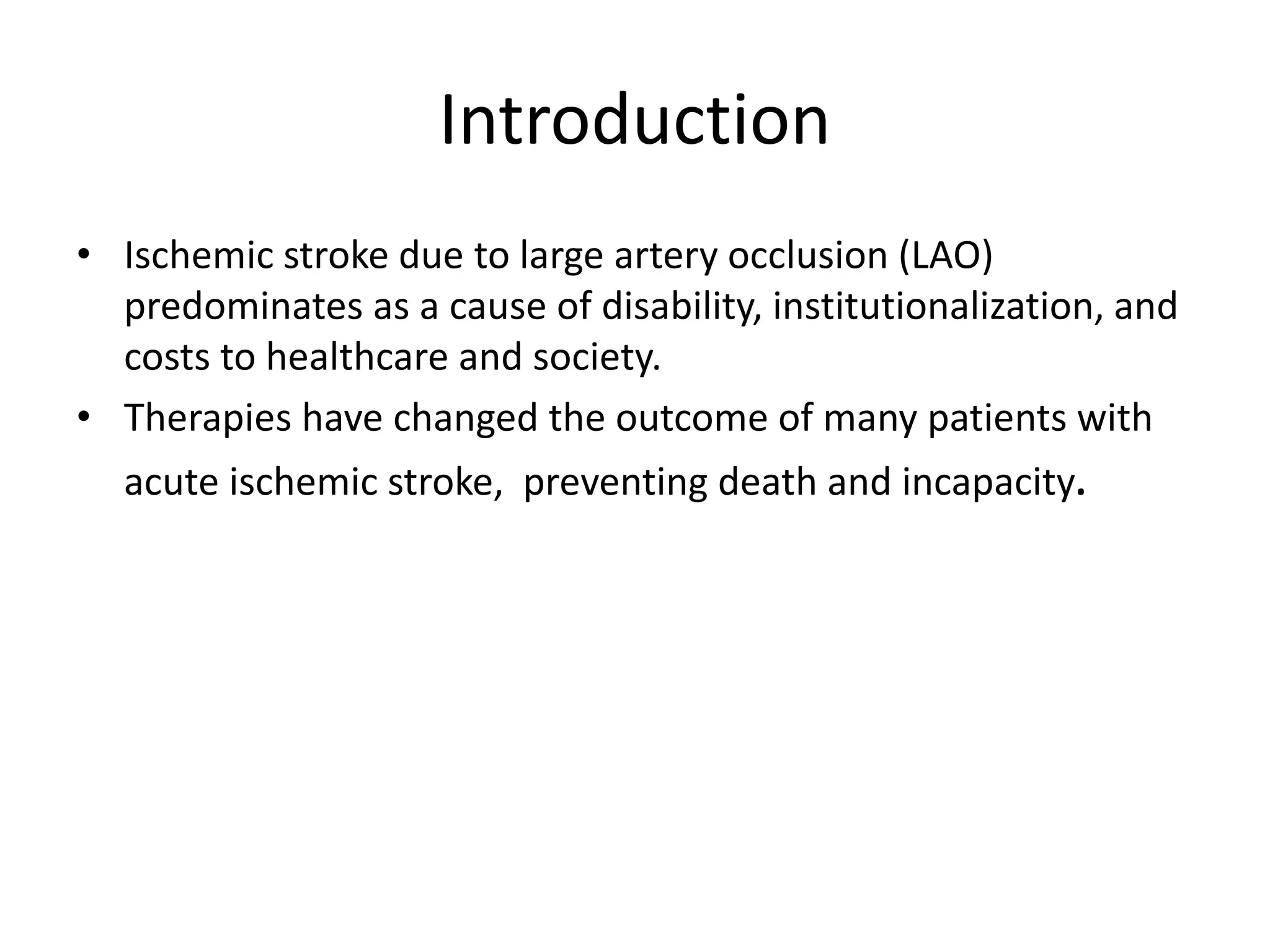This document discusses the evolution of treatments for acute ischemic stroke caused by large vessel occlusion over the past three decades. It describes the development of intravenous thrombolysis using alteplase, including early safety trials, phase 3 efficacy trials, and limitations. It also discusses the emergence of endovascular therapies such as mechanical thrombectomy and the importance of neuroimaging such as CT and CT perfusion in selecting appropriate patients. The role of collateral circulation and a "tissue window" approach are also highlighted.







![History of Thrombolytics
• The first thrombolytic activity was found by Tillet and Garner in 1933 in a
substance produced by group A beta-hemolytic streptococci.
• The substance was responsible for the clot dissolution was initially named
fibrinolysin, but the name was later changed to streptokinase .
• Fletcher et al. were the first to deliver IV streptokinase to human patients with
acute MI in 1958.
• During the 1980s, through recombinant technology, multiple second and third
generation lytics were developed.
• Second generation agent is alteplase (recombinant tissue plasminogen activator
[rt-PA]).
• Third generation thrombolytics Tenecteplase and reteplase had their chemical
structure slightly altered to increase fibrin specificity and to increase half-life.](https://image.slidesharecdn.com/revasularisationofacutestroke-230415152807-9f48436d/75/revasularisation-of-acute-stroke-pptx-8-2048.jpg)


























































































